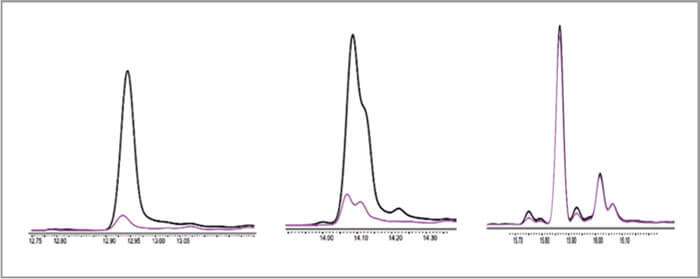Products using UCT’s All New LipiFiltr® Push-Thru Cartridges
Cannabis testing laboratories face the difficult task of removing a variety of unwanted matrix components from their samples prior to LC-MS or GC-MS analysis. High-lipid samples, in particular, pose a major challenge when testing for a large number of pesticide residues that contain different physicochemical properties and need to be detected at very low concentrations.
This application note outlines the performance benefits achieved using the LipiFiltr® cleanup cartridge for the analysis of pesticides in oil-based cannabis products using LC-MS/MS analysis. The pesticides evaluated in this study include those listed in the Oregon monitoring list (~60 pesticides). CBD oil was used as the representative matrix. A comparison of preand post-LipiFiltr® cleanup using full scan GC-MS is also presented to demonstrate the removal of lipid co-extractives. This work was originally presented as a poster at the North American Chemical Residue Workshop (NACRW) 2018 in Naples, Florida.






